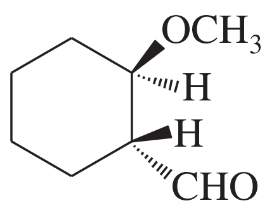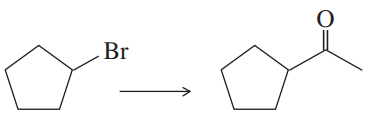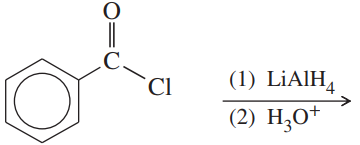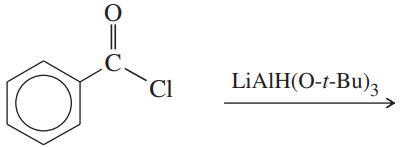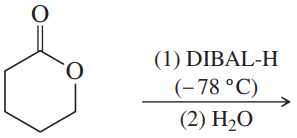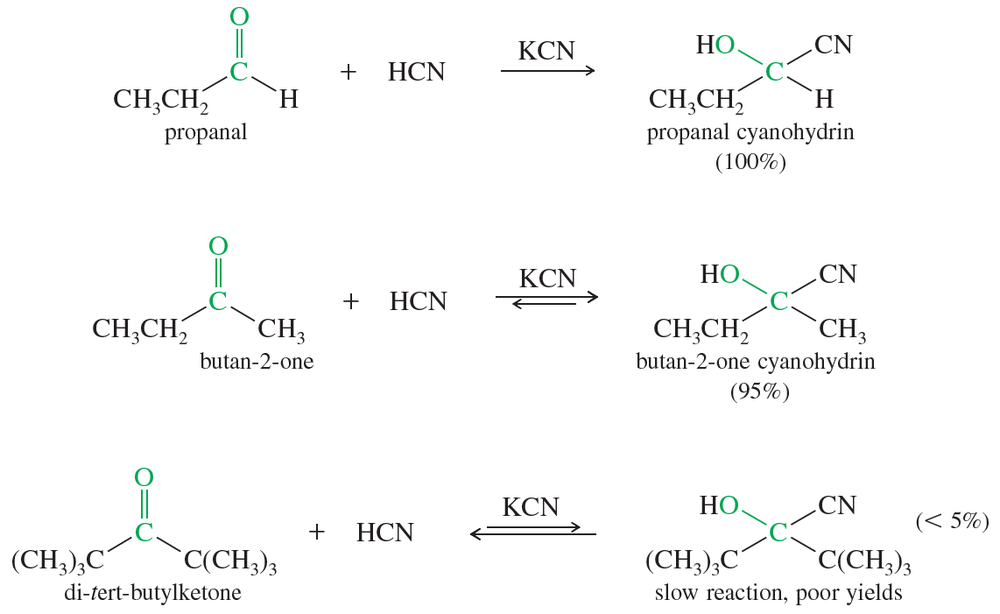 Back
BackProblem 1a
Give the IUPAC name and (if possible) a common name for each compound.
(a)
Problem 1a,b
Draw the structure for each of the following:
a. 2-phenylhexane
b. benzyl alcohol
Problem 1b
Give the IUPAC name and (if possible) a common name for each compound.
(b)
Problem 1c
Give the IUPAC name and (if possible) a common name for each compound.
(c)
Problem 1c,d
Draw the structure for each of the following:
c. 3-benzylpentane
d. bromomethylbenzene
Problem 3
Why were no products from the McLafferty rearrangement observed in the spectrum of butan-2-one (Figure 18-3)?
<IMAGE>
Problem 4d(3,4)
Give the structure of the principal product(s) when each of the following alcohols reacts with (3) DMP and (4) 1 equiv NaOCl-TEMPO.
d. 1-methylcyclohexan-1,4-diol
Problem 6
Show how you would synthesize each compound from starting materials containing no more than six carbon atoms.
Problem 7a
Show how you would accomplish the following synthetic conversions by adding an organolithium reagent to an acid.
(a)
Problem 7b
Show how you would accomplish the following synthetic conversions by adding an organolithium reagent to an acid.
(b)
Problem 7c
Show how you would accomplish the following synthetic
conversions by adding an organolithium reagent to an acid.
(c) pentanoic acid → heptan-3-one
Problem 7d
Show how you would accomplish the following synthetic conversions by adding an organolithium reagent to an acid.
(d) phenylacetic acid → 3,3-dimethyl-1-phenylbutan-2-one
Problem 8
Predict the products of the following reactions.
(c) benzyl bromide + sodium cyanide
Problem 8d
Predict the products of the following reactions.
(d) product of (c) + cyclopentylmagnesium bromide, then acidic hydrolysis
Problem 8e
Predict the products of the following reactions.
(e) product of (c) + DIBAL-H, then hydrolysis
Problem 9a,b
Show how the following transformations may be accomplished in good yield. You may use any additional reagents that are needed.
(a) bromobenzene → propiophenone
(b) CH3CH2CN → heptan-3-one
Problem 9c,d
Show how the following transformations may be accomplished in good yield. You may use any additional reagents that are needed.
(c) benzoic acid → phenyl cyclopentyl ketone
(d) 1-bromohept-2-ene → oct-3-enal
Problem 10a,b
Predict the products of the following reactions:
(a)
(b)
Problem 10c,d
Predict the products of the following reactions:
(c)
(d)
Problem 10e,f
Predict the products of the following reactions:
(e)
(f)
Problem 11a
Show how you would accomplish the following synthetic conversions. You may use any additional reagents and solvents you need.
(a)
Problem 11b
Show how you would accomplish the following synthetic conversions. You may use any additional reagents and solvents you need.
(b)
Problem 11d
Show how you would accomplish the following synthetic conversions. You may use any additional reagents and solvents you need.
(d)
Problem 12a
Sodium triacetoxyborohydride, NaBH(OAc)3, is a mild reducing agent that reduces aldehydes much more quickly than ketones. It can be used to reduce aldehydes in the presence of ketones, such as in the following reaction:
(a) Draw a complete Lewis structure for sodium triacetoxyborohydride.
Problem 12b
Sodium triacetoxyborohydride, NaBH(OAc)3, is a mild reducing agent that reduces aldehydes much more quickly than ketones. It can be used to reduce aldehydes in the presence of ketones, such as in the following reaction:

(b) Propose a mechanism for the reduction of an aldehyde by sodium triacetoxyborohydride.
Problem 13a
Propose mechanisms for
(a) the acid-catalyzed hydration of chloral to form chloral hydrate.
Problem 13b
Propose mechanisms for
(b) the base-catalyzed hydration of acetone to form acetone hydrate.
Problem 15
Propose a mechanism for each cyanohydrin synthesis just shown.
Problem 16a
Show how you would accomplish the following syntheses.
(a) acetophenone → acetophenone cyanohydrin
Problem 16b
Show how you would accomplish the following syntheses.
b. cyclopentanecarbaldehyde → 2-cyclopentyl-2-hydroxyacetic acid



